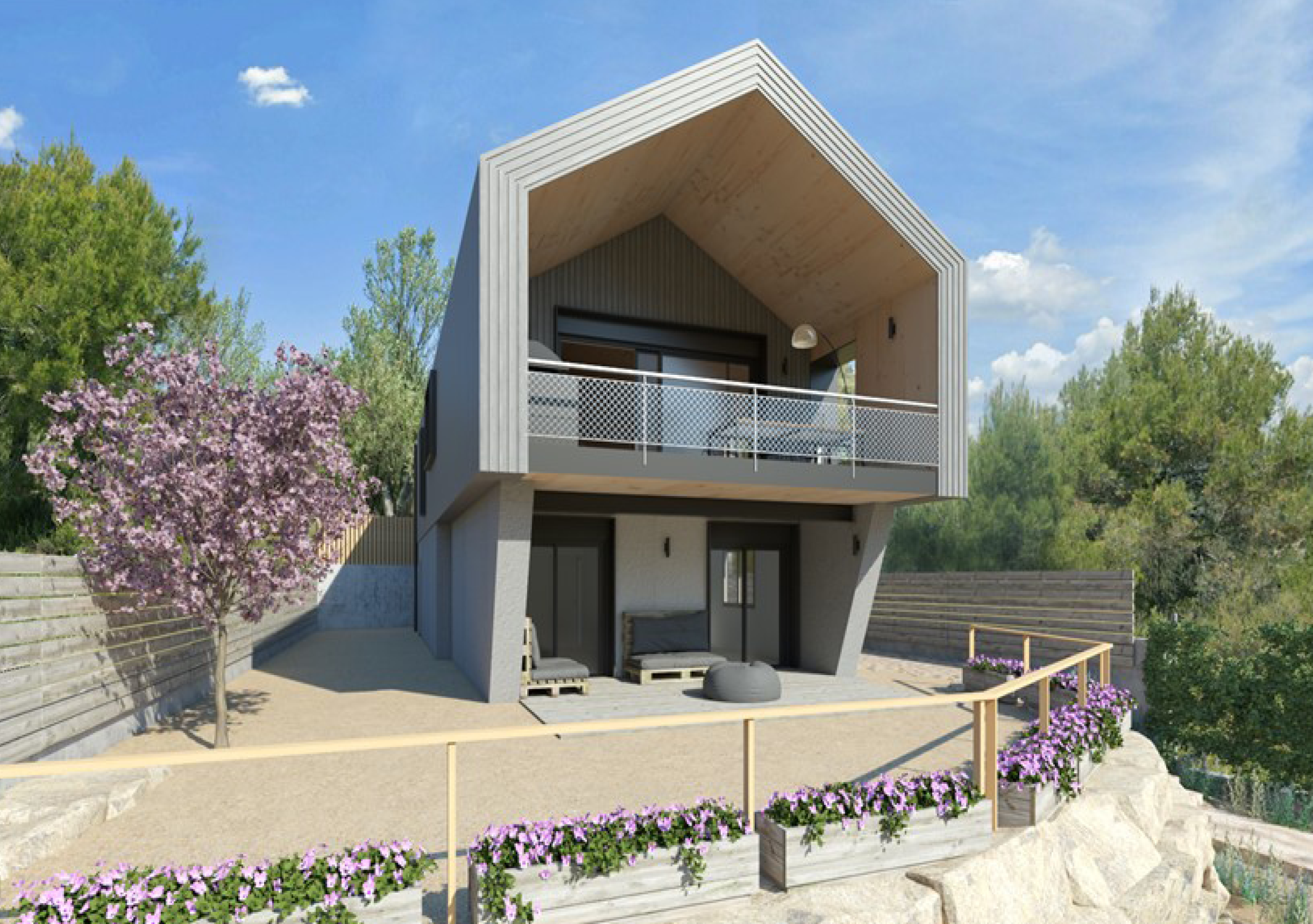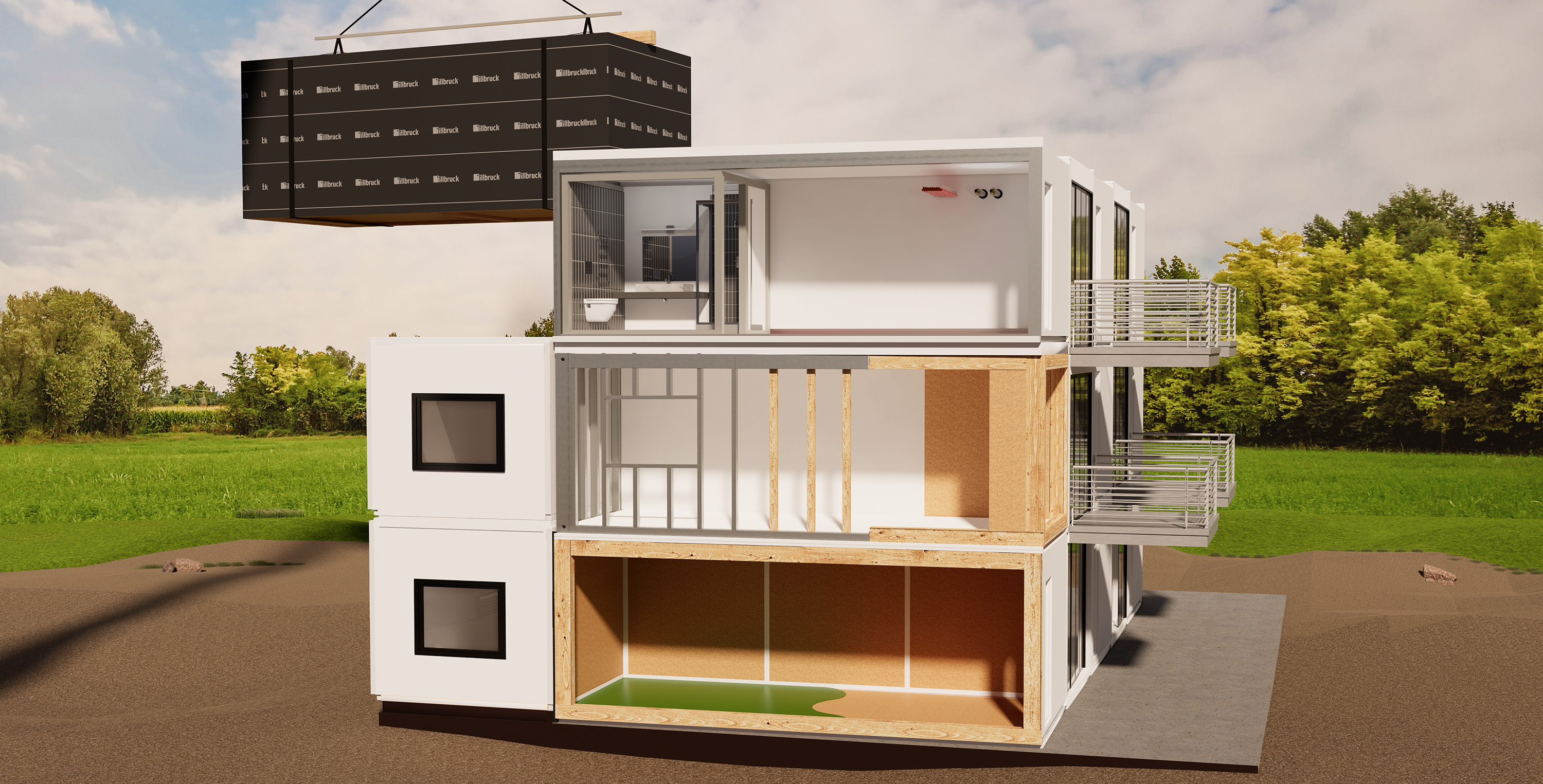Lilu's House - Passivhaus Standards

A recap on Passivhaus
The formal definition tells us that Passivhaus is an efficient building that aims to reduce the energy consumption and it achieves, in some cases, energy self-sufficiency through its special design and construction.
Up to 90% energy savings can be achieved with a Passivhaus build, compared to standard buildings. To achieve this, a Passivhaus building must use very little energy for heating and cooling.
Aside from energy efficiency, a key benefit of a Passivhaus building is user comfort as they are built to have high indoor air quality and maintain an optimum temperature no matter the time of the year.
Lilu's House
The aim of this project is to get a Passivhaus certification for a completely wooden house, the first of its kind in Catalonia. This house will not only serve as a home but also House Habitat’s headquarters and will allow universities and other companies to see a Passivhaus in action!
Some of Lilu’s House construction key points are:
- Ability to monitor energy consumption and other variables. Engineers, technicians and end users could experiment and see if they could live in a bio-passive house.
- Green construction. The house will be made with modular construction, so the carbon footprint is greatly reduced compared to other traditional construction methods. What’s more, km. 0 sustainable materials will be used – these are materials that have travelled less than 100km to the construction site and are produced ecologically and organically.
- Healthy house. With excellent indoor air quality that reduces VOC and a special design minimising electromagnetic fields and other harmful substances. Moisture control will also be in place. In addition, the house will contain a dual-flow ventilation system with heat recovery to maintain high air quality indoors to optimise users’ health.
- Energy efficiency. If the house maintains positive energy consumption: it will save more energy than it uses.
- 5-month construction time. Work impact is reduced. Its structure and roof were built in just 5 days and the project is due to be completed within 5 months.
CPG Europe Collaborates with this Sustainable Building
As an industry leader in providing sustainable building construction solutions, Tremco CPG Europe is excited to be in collaboration on this exciting project, offering its products, services and knowledge to House Habitat. With the main target being to achieve user comfort and increase the wellbeing of the occupiers, with minimal energy consumption, products from CPG Europe’s window & façade product specialist illbruck will be used. These products include tapes, sealants and hybrid adhesives.
For window and perimeter joints sealing, TP654 illmod Trio 1050 illbruck tape will be used. This tape avoids water infiltrations, ensures airtight insulation, provides excellent thermal and acoustic insulation and follows Passivhaus requirements.
SP050 illbruck high strength adhesive will be used for timber joinery thanks to its weather and UV resistance and excellent tensile strength.
Passivhaus Design
With the structure built in just five days, Lilu’s House consists of 180 m2 over two floors, with a modern, compact design, sloping roof and large windows, providing sun and daylight. The house has got a ventilated timber façade and an External Thermal Insulation Composite System (ETICS).
The house is built with a dual structure comprising light wood and CTL (wooden laminated panels), sourced from Pyrenees sustainable forests. As a Modular construction system, the shorter delivery construction times mean that the construction of the house could be finished in 5 months.
Lilu’s House Passivhaus Plus certification is one of the most demanding certificates regarding energy efficiency and states that renewable primary energy demand should not exceed 45 kWh/m² per year, which this construction achieves.
This certification requires that renewable energy generation should be at least 60 kWh/ m² per year, and this will be achieved thanks to the solar panels installed on the roof. The house will also have an aerothermal climatisation system and hot sanitary water (HSW) system, which will contribute to this certification. Finally, the certification could only be awarded after a close examination of the energy needs, situation, weather, shadows, solar radiation, altitude and air tightness.
To sum up, this building will have a positive energy consumption, generating more energy than it will need.
Passivhaus construction sites have a growing presence in our daily lives. Although it still represents only a small part of the construction sector, it’s growing year by year and is recognised as a viable construction option that has a great future ahead.
Tremco CPG Europe is excited to be involved in a new Passivhaus project, known as Lilu’s House and based in Catalonia, Spain, in collaboration with House Habitat, a specialist bio passive construction company.
Related Articles
Passivhaus construction sites have a growing presence in our daily lives. Although it still represents only a small part of the construction sector, it’s growing year by year and is recognised as a viable construction option that has a great future ahead.
CPG Europe is excited to be involved in a new Passivhaus project, known as Lilu’s House and based in Catalonia, Spain, in collaboration with House Habitat, a specialist bio passive construction company.











